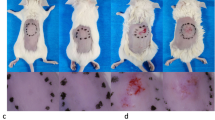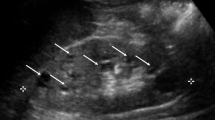Abstract
Axillary osmidrosis is a benign disorder that causes functional and emotional problems in Asian patients. Recently, ApoD has been identified as an axillary odorant binding protein. The present study was designed to compare the expression of ApoD in normal and osmidrosis subjects. Compared with the normal subjects, osmidrosis subjects had a higher expression of AR and ApoD in the apocrine samples, both at mRNA and protein level. Further study showed that, consistent with the increased ApoD and AR, phosphorylated JNK1 was higher in apocrine samples from axillary osmidrosis subjects, while with no obvious differences of the total expression of JNK1. In the cultured apocrine epithelial cells from normal subjects, 5α-dihydrotestosterone (5α-DHT) increased the expression of ApoD in a dose dependent manner, which can be inhibited by the JNK1 inhibitor. In contrast, in the cultured apocrine epithelial cells from axillary osmidrosis subjects, inhibition of JNK1 significantly reduced the expression of ApoD. Taken together, our study here revealed that increased JNK1 activation in the apocrine cells from axillary osmidrosis contributes to the increased ApoD expression, which in turn involved in the process of axillary osmidrosis.



Similar content being viewed by others
References
Huang YH, Yang CH, Chen YH, Chen CH, Lee SH (2010) Reduction in osmidrosis using a suction-assisted cartilage shaver improves the quality of life. Dermatol Surg 36:1573–1577
Nakano M, Miwa N, Hirano A, Yoshiura K, Niikawa N (2009) A strong association of axillary osmidrosis with the wet earwax type determined by genotyping of the ABCC11 gene. BMC Genet 10:42
Pierce JD Jr, Zeng XN, Aronov EV, Preti G, Wysocki CJ (1995) Cross-adaptation of sweaty-smelling 3-methyl-2-hexenoic acid by a structurally-similar, pleasant-smelling odorant. Chem Senses 20:401–411
Emter R, Natsch A (2008) The sequential action of a dipeptidase and a beta-lyase is required for the release of the human body odorant 3-methyl-3-sulfanylhexan-1-ol from a secreted Cys-Gly-(S) conjugate by Corynebacteria. J Biol Chem 283:20645–20652
Spielman AI, Zeng XN, Leyden JJ, Preti G (1995) Proteinaceous precursors of human axillary odor: isolation of two novel odor-binding proteins. Experientia 51:40–47
Spielman AI, Sunavala G, Harmony JA, Stuart WD, Leyden JJ, Turner G, Vowels BR, Lam WC, Yang S, Preti G (1998) Identification and immunohistochemical localization of protein precursors to human axillary odors in apocrine glands and secretions. Arch Dermatol 134:813–818
Zeng C, Spielman AI, Vowels BR, Leyden JJ, Biemann K, Preti G (1996) A human axillary odorant is carried by apolipoprotein D. Proc Natl Acad Sci USA 93:6626–6630
Flower DR (1996) The lipocalin protein family: structure and function. Biochem J 318(Pt 1):1–14
Drayna DT, McLean JW, Wion KL, Trent JM, Drabkin HA, Lawn RM (1987) Human apolipoprotein D gene: gene sequence, chromosome localization, and homology to the alpha 2u-globulin superfamily. DNA 6:199–204
Rassart E, Bedirian A, Do Carmo S, Guinard O, Sirois J, Terrisse L, Milne R (2000) Apolipoprotein D. Biochim Biophys Acta 1482:185–198
Simard J, Veilleux R, de Launoit Y, Haagensen DE, Labrie F (1991) Stimulation of apolipoprotein D secretion by steroids coincides with inhibition of cell proliferation in human LNCaP prostate cancer cells. Cancer Res 51:4336–4341
Haagensen DE, Stewart P, Dilley WG, Wells SA (1992) Secretion of breast gross cystic disease fluid proteins by T47D breast cancer cells in culture–modulation by steroid hormones. Breast Cancer Res Treat 23:77–86
Chalbos D, Haagensen D, Parish T, Rochefort H (1987) Identification and androgen regulation of two proteins released by T47D human breast cancer cells. Cancer Res 47:2787–2792
Simard J, de Launoit Y, Haagensen DE, Labrie F (1992) Additive stimulatory action of glucocorticoids and androgens on basal and estrogen-repressed apolipoprotein-D messenger ribonucleic acid levels and secretion in human breast cancer cells. Endocrinology 130:1115–1121
Hall RE, Horsfall DJ, Stahl J, Vivekanandan S, Ricciardelli C, Stapleton AM, Scardino PT, Neufing P, Tilley WD (2004) Apolipoprotein-D: a novel cellular marker for HGPIN and prostate cancer. Prostate 58:103–108
Kurata S, Itami S, Komada S, Takayasu S (1990) Intranuclear androgen and cytosolic receptor concentrations in the axillary skin of osmidrosis. Arch Dermatol Res 282:33–37
Beier K, Ginez I, Schaller H (2005) Localization of steroid hormone receptors in the apocrine sweat glands of the human axilla. Histochem Cell Biol 123:61–65
Norlin M, Pettersson H, Tang W, Wikvall K (2011) Androgen receptor-mediated regulation of the anti-atherogenic enzyme CYP27A1 involves the JNK/c-jun pathway. Arch Biochem Biophys 506:236–241
Verzola D, Villaggio B, Procopio V, Gandolfo MT, Gianiorio F, Fama A, Tosetti F, Traverso P, Deferrari G, Garibotto G (2009) Androgen-mediated apoptosis of kidney tubule cells: role of c-Jun amino terminal kinase. Biochem Biophys Res Commun 387:531–536
Wang Z, Liu L, Hou J, Wen D, Yan C, Pu J, Ouyang J, Pan H (2008) Rapid membrane effect of testosterone in LNCaP cells. Urol Int 81:353–359
Maras Z, Yardley G, Deane E, Moore GP (1999) Cultivation of epithelia from the secretory coil of the ovine apocrine gland: evidence of secretory cell function and ductal morphogenesis in vitro. In Vitro Cell Dev Biol Anim 35:606–611
Tao R, Han Y, Chai J, Li D, Sun T (2010) Isolation, culture, and verification of human sweat gland epithelial cells. Cytotechnology 62:489–495
Gonzalez LO, Corte MD, Junquera S, Bongera M, Rodriguez JC, Vizoso FJ (2007) Expression of androgen receptor and two androgen-induced proteins (apolipoprotein D and pepsinogen C) in ductal carcinoma in situ of the breast. Histopathology 50:866–874
Shimada K, Nakamura M, Ishida E, Kishi M, Konishi N (2003) Requirement of c-jun for testosterone-induced sensitization to N-(4-hydroxyphenyl)retinamide-induced apoptosis. Mol Carcinog 36:115–122
Appari M, Werner R, Wunsch L, Cario G, Demeter J, Hiort O, Riepe F, Brooks JD, Holterhus PM (2009) Apolipoprotein D (APOD) is a putative biomarker of androgen receptor function in androgen insensitivity syndrome. J Mol Med 87:623–632
Beato M (1989) Gene regulation by steroid hormones. Cell 56:335–344
Schoenmakers E, Verrijdt G, Peeters B, Verhoeven G, Rombauts W, Claessens F (2000) Differences in DNA binding characteristics of the androgen and glucocorticoid receptors can determine hormone-specific responses. J Biol Chem 275:12290–12297
Foradori CD, Weiser MJ, Handa RJ (2008) Non-genomic actions of androgens. Front Neuroendocrinol 29:169–181
Lee SH, Heo JS, Lee MY, Han HJ (2008) Effect of dihydrotestosterone on hydrogen peroxide-induced apoptosis of mouse embryonic stem cells. J Cell Physiol 216:269–275
Hull-Thompson J, Muffat J, Sanchez D, Walker DW, Benzer S, Ganfornina MD, Jasper H (2009) Control of metabolic homeostasis by stress signaling is mediated by the lipocalin NLaz. PLoS Genet 5:e1000460
Do Carmo S, Seguin D, Milne R, Rassart E (2002) Modulation of apolipoprotein D and apolipoprotein E mRNA expression by growth arrest and identification of key elements in the promoter. J Biol Chem 277:5514–5523
Ham J, Eilers A, Whitfield J, Neame SJ, Shah B (2000) c-Jun and the transcriptional control of neuronal apoptosis. Biochem Pharmacol 60:1015–1021
Do Carmo S, Levros LC Jr, Rassart E (2007) Modulation of apolipoprotein D expression and translocation under specific stress conditions. Biochim Biophys Acta 1773:954–969
Bogoyevitch MA, Ngoei KR, Zhao TT, Yeap YY, Ng DC (2010) c-Jun N-terminal kinase (JNK) signaling: recent advances and challenges. Biochim Biophys Acta 1804:463–475
Author information
Authors and Affiliations
Corresponding author
Additional information
Hui Chen and Yingli Li contribute equally to this work.
Rights and permissions
About this article
Cite this article
Chen, H., Li, Y., Du, J. et al. Increased JNK1 activity contributes to the upregulation of ApoD in the apocrine secretory gland cells from axillary osmidrosis. Mol Cell Biochem 354, 311–316 (2011). https://doi.org/10.1007/s11010-011-0830-5
Received:
Accepted:
Published:
Issue Date:
DOI: https://doi.org/10.1007/s11010-011-0830-5




